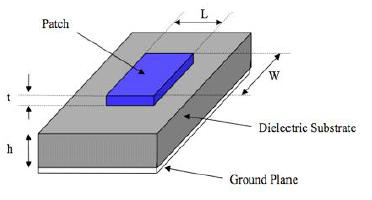
The -10 dB stop-band bandwidths for 0°, 30°, 45° and 60° angles are 370, 320, 240 and 180 MHz, respectively. As shown, for 0°, 30°, 45° and 60° angles, the resonant frequencies of the proposed FSS are 3.04, 3.02, 3.01 and 3.0 GHz, respectively. In Figures 4 (a) and (b), the simulated results of oblique incident angles are presented for vertical perpendicular polarization (TE). The parameters of the proposed FSS, whose resonant frequency is 3 GHz, are p = 18 mm, d = 17.5 mm, c = 5 mm, s = 1 mm, g = 0.5 mm, b = 0.5 mm, t = 3.5 mm, and the thickness and dielectric permittivity of the dielectric substrate are h = 1.5 mm, εr = 6, respectively.Ī FDTD method is used to simulate the proposed FSS and the conventional square-loop FSS, respectively. This prediction will later be validated by curves shown in Figure 4.Īn S-band FSS with the proposed structure was designed. Therefore, the proposed FSS has a narrower bandwidth compared to conventional one. 7 From Equation 9, it can be found that the inductance L is smaller than that of the conventional one. FSS Design and Resultsįigure 4 Transmission coefficients for different incident angles: (a) Theoretical coefficient for conventional FSS with infinite unit cells (b) theoretical coefficient of the proposed FSS with infinite unit cells and (c) measured coefficients of the proposed FSS with 10 × 10 unit cells. Simulated and measured results show that antennas using the new FSS ground plane can simultaneously have a much lower monostatic RCS with various incident angles and little disturbances to the radiation property. In order to validate the method, the proposed FSS is applied to a microstrip dipole antenna for RCS reduction. Meanwhile, its stop-band width is so narrow that more incident waves, beyond the operating frequency, can penetrate the antenna. By introducing four narrow branches to a conventional square loop FSS, the proposed FSS has good resonant frequency stability for different incident angles. If the bandwidth is too wide, the FSS plane will excessively reflect the incident energy beyond the operation frequency, thus increasing the RCS of antenna.īased on the above reasons, a novel stop-band FSS is proposed and applied to the ground plane of an antenna. The other is the stop-band bandwidth of the FSS. If the resonant frequency shifts too much, the stop-band of the FSS will move outside the operating frequency band, thus decreasing the radiation gain. One is the stability of the resonant frequency with the angles of incident waves.

For RCS reduction of the antenna, the FSS that is used as a ground plane must possess two important bandstop properties. However, in the passband, most of the electromagnetic waves penetrate the antenna so that the structural RCS of the antenna can be greatly reduced. In the stop-band, the FSS operates as a conventional metallic ground plane to enhance the radiation gain. Due to the reflection property of the FSS in stop-band, it can be utilized as a ground plane to enhance the radiation gain of the antenna in place of conventional metallic ground planes.

In order to reduce this scattering component, the conventional metallic ground is replaced by the proposed FSS. However, the metallic ground plane, which largely reflects the energy of incident waves, is one of the most important scattering components of an antenna. Most antennas, such as dipoles, microstrip patches, etc., need a metallic ground that acts as a reflector to enhance the radiation gain. In contrast, there are little reports on the RCS reduction using the stop-band FSS. 5-8 The integration of a frequency selective surface with a protective radome can considerably reduce the RCS of the enclosed antenna outside its operating band.

For the application of RCS reduction, there are many reports on the utilization of passband FSS as radomes for antennas. One is the passband FSS, the other is the stop-band FSS. 2-4 According to their different transmission properties, there are two kinds of FSS. Recently, a growing interest has been devoted to the application of frequency selective surfaces 1 in many fields such as radar systems, telecommunication, military and wireless security.


 0 kommentar(er)
0 kommentar(er)
